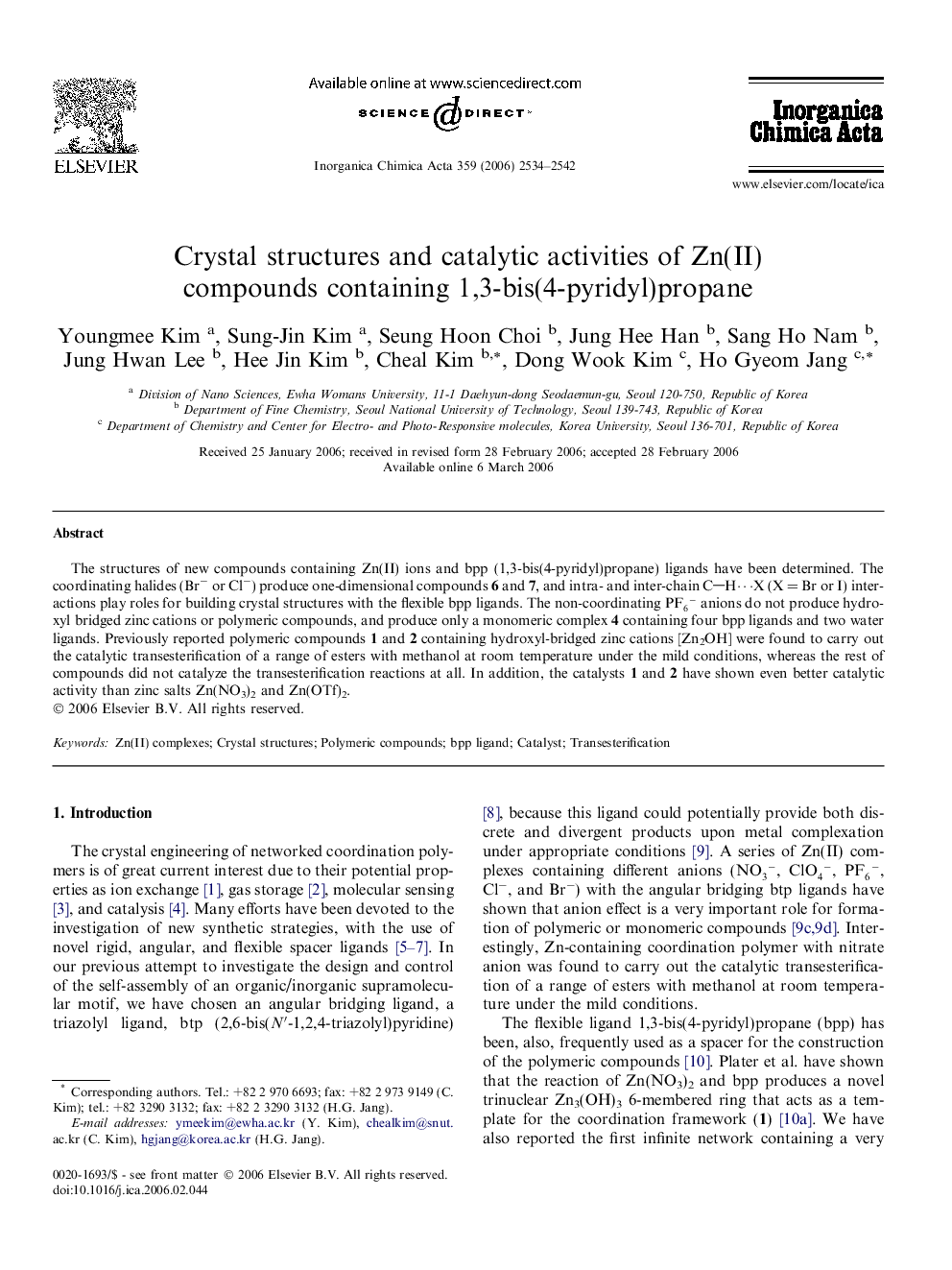| Article ID | Journal | Published Year | Pages | File Type |
|---|---|---|---|---|
| 1311738 | Inorganica Chimica Acta | 2006 | 9 Pages |
The structures of new compounds containing Zn(II) ions and bpp (1,3-bis(4-pyridyl)propane) ligands have been determined. The coordinating halides (Br− or Cl−) produce one-dimensional compounds 6 and 7, and intra- and inter-chain CH⋯X (X = Br or I) interactions play roles for building crystal structures with the flexible bpp ligands. The non-coordinating PF6− anions do not produce hydroxyl bridged zinc cations or polymeric compounds, and produce only a monomeric complex 4 containing four bpp ligands and two water ligands. Previously reported polymeric compounds 1 and 2 containing hydroxyl-bridged zinc cations [Zn2OH] were found to carry out the catalytic transesterification of a range of esters with methanol at room temperature under the mild conditions, whereas the rest of compounds did not catalyze the transesterification reactions at all. In addition, the catalysts 1 and 2 have shown even better catalytic activity than zinc salts Zn(NO3)2 and Zn(OTf)2.
Graphical abstractThe structures of new compounds containing Zn(II) ions and bpp ligands have been determined. The polymeric compounds 1 and 2 containing hydroxyl-bridged zinc cations [Zn2OH] were found to carry out the catalytic transesterification of a range of esters with methanol at room temperature under the mild conditions.Figure optionsDownload full-size imageDownload as PowerPoint slide
